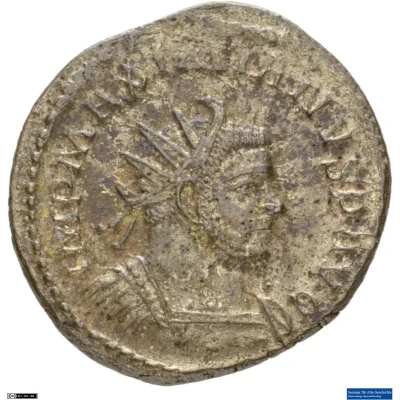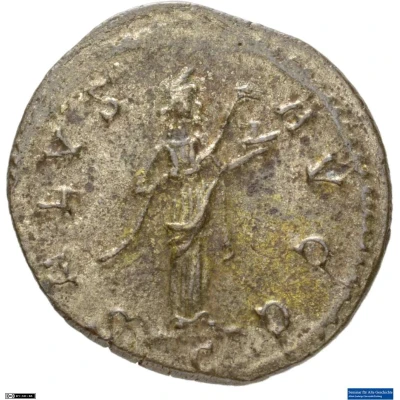Antoninianus - Maximianus SALVS AVGG; Salus
| Silver | 3.4 g | 23 mm |
| Issuer | Rome › Roman Empire (27 BC - 395 AD) |
|---|---|
| Emperor | Maximian Herculius (Marcus Aurelius Valerius Maximianus) (286-305) Diocletian (Gaius Aurelius Valerius Diocletianus) (284-305) |
| Type | Standard circulation coin |
| Years | 291-293 |
| Value | Antoninianus (1) |
| Currency | Antoninianus, Reform of Caracalla (AD 215 – 301) |
| Composition | Silver |
| Weight | 3.4 g |
| Diameter | 23 mm |
| Shape | Round (irregular) |
| Technique | Hammered |
| Demonetized | Yes |
| Updated | 2024-10-05 |
| Numista | N#306355 |
|---|---|
| Rarity index | 100% |
Reverse
Salus, draped, standing right, feeding snake held in arms.
Script: Latin
Lettering:
SALVS AVGG
-/-//C
Translation:
Salus Duorum Augustorum.
Health of the two emperors (Augusti).
Comment
Source:Online Coins of the Roman Empire (OCRE)
Interesting fact
The Antoninianus - Maximianus coin was issued during a time of great economic and political turmoil in the Roman Empire. The coin's design, featuring the goddess Salus (Salvation) on the reverse, was meant to promote the idea of salvation and protection during a period of crisis. Despite its small size, the coin was made of silver, indicating the value placed on precious metals during this time. Additionally, the coin's minting process was likely done using a technique called "fourree," where a base metal core was covered with a thin layer of silver to make it appear more valuable. This fact highlights the creativity and resourcefulness of the Roman Empire's minting practices during a time of economic challenge.

